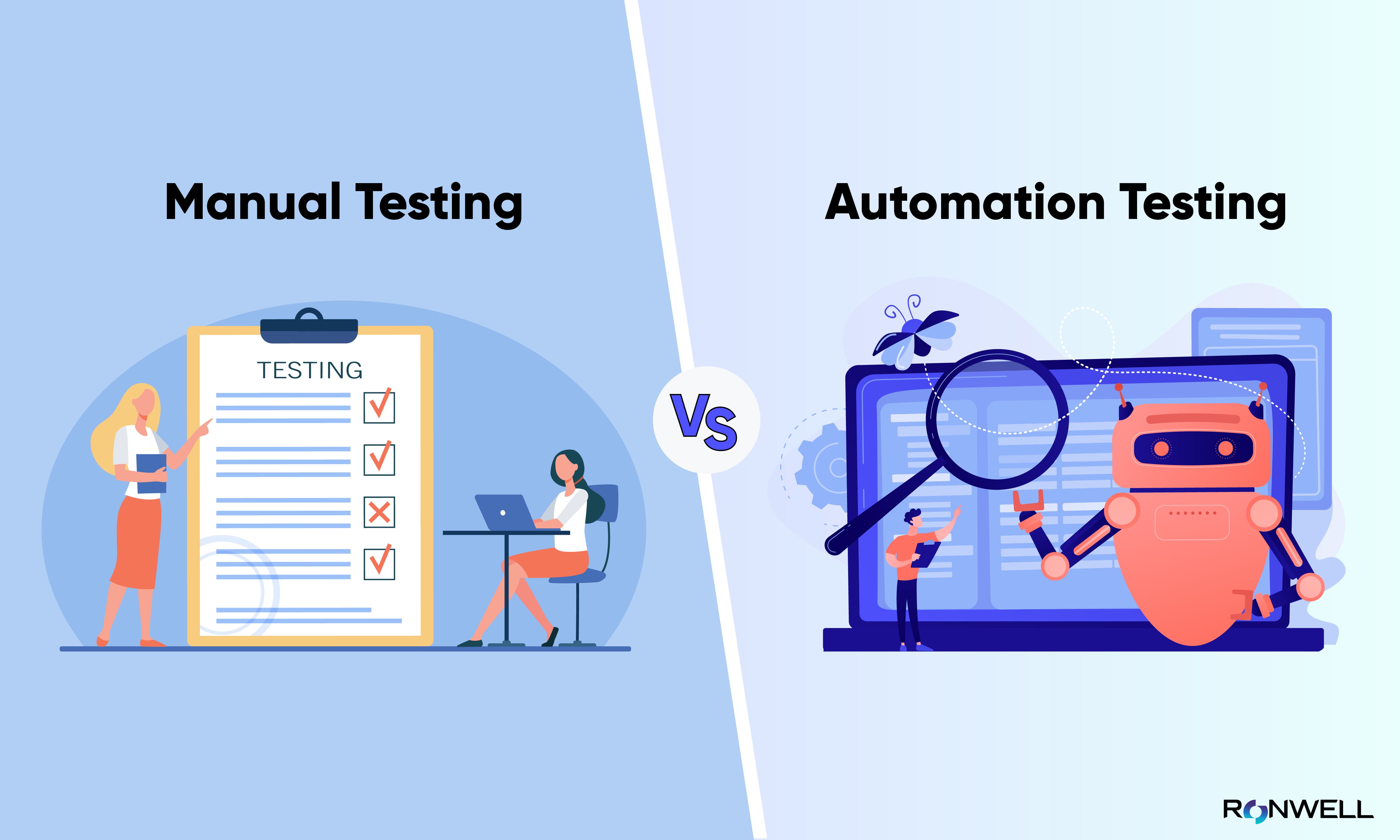Selecting the Right Tools for Effective Automation Testing Solutions
Selecting the Right Tools for Effective Automation Testing Solutions
Blog Article
From Guidebook to Automated Screening: A Comprehensive Overview to Transitioning Smoothly and Successfully
In the realm of software application testing, the change from manual to automated procedures has become a progressively crucial change for organizations looking for to enhance effectiveness and accuracy in their screening methods. As innovation remains to advancement, the demand for smooth and efficient computerized testing methods has never been more pressing. The trip from handbook to automated testing is not without its challenges, yet when come close to tactically and with a clear plan in mind, the advantages can be substantial - automation testing. In this thorough overview, we will explore vital actions and considerations important for a successful change, from the initial option of tools to the integration of automation right into existing process. Remain tuned to reveal the insights that will assist lead the way for a smoother and a lot more effective screening process.
Benefits of Automated Examining
Automated screening provides numerous advantages, boosting performance and accuracy in software program development processes. One key advantage is the considerable reduction in testing time. Automated examinations can be run concurrently on several gadgets and running systems, dramatically quickening the screening stage compared to hand-operated screening. This raised performance enables faster comments on the quality of the software, making it possible for programmers to determine and attend to problems promptly.
Moreover, automated testing guarantees a greater degree of precision in identifying problems. Given that automated tests comply with predefined manuscripts, human error is reduced, causing even more dependable examination outcomes. Uniformity in screening is likewise boosted, as automated tests perform the very same actions precisely each time they are run. This consistency is essential in guaranteeing that all functionalities of the software application are completely tested, lowering the likelihood of unseen insects slipping via to production.
Selecting the Right Devices

Firstly, assess your objectives and requirements. Understand the scope of your project, the technologies involved, and the ability of your team. This analysis will help you identify the capacities and functions you need in your testing tools.
Secondly, take into consideration the compatibility of the devices with your existing procedures and systems. Seamless integration with your present software application growth lifecycle is vital to ensure a smooth transition to automation.
Furthermore, assess the scalability and flexibility of the tools. As your screening requires develop, the tools need to have the ability to adjust and suit adjustments successfully.
Finally, aspect in the assistance and community around the devices. Durable support and an energetic individual neighborhood can provide beneficial resources and assistance when applying automated testing. By thoroughly considering these facets, you can choose the right tools that straighten with your demands and established the phase for a successful change to automated testing.
Creating Efficient Examination Scripts

When crafting test scripts, it is necessary to think about the particular demands of the software being checked and make certain that the scripts deal with all vital performances. Clear and detailed naming conventions for examination scripts and examination cases can enhance readability and maintainability. In addition, integrating mistake handling mechanisms within the examination manuscripts can help in recognizing and dealing with problems promptly.
Additionally, arranging test scripts right into modular parts can improve reusability and scalability, minimizing redundancy and boosting efficiency in test manuscript upkeep. Regular evaluations and updates to check manuscripts are essential to maintain rate with evolving software demands and capabilities. By following these principles, testers can produce durable and reliable test scripts that contribute substantially to the success of automated screening procedures.
Integrating Automation Into Workflows
Efficient integration of automation tools into existing process simplifies procedures and enhances performance within software program development cycles. When integrating automation into process, it is critical to identify recurring tasks that can be automated to save time and lower human error. By effortlessly incorporating automated testing devices like Selenium or Appium into the software application growth lifecycle, groups can attain faster responses on code adjustments, resulting in quicker insect discovery and resolution. This combination enables for constant screening throughout the advancement procedure, ensuring that any type of problems are identified early, leading to greater software program top quality. In addition, automation can be made use of to cause examinations automatically after each code commit, offering immediate validation and liberating testers to focus on more complex scenarios. Proper integration of automation tools requires collaboration between growth, screening, and procedures teams to establish a unified workflow that optimizes effectiveness and effectiveness in delivering premium software products.
Ensuring a Smooth Change
Effectively transitioning to automated testing entails thorough planning and mindful implementation to maximize and Look At This minimize disturbances performance in the software program advancement process - automation testing. To make sure a smooth change, it is vital to begin by carrying out a complete evaluation of the current testing processes and determining locations where automation can bring one of the most considerable advantages. Engaging with all stakeholders early at the same time, including designers, testers, and task managers, is critical for garnering assistance and buy-in for the automation campaign
Communication is crucial during this shift stage. Clear communication of the objectives, advantages, and expectations of automated testing helps to manage any type of resistance or problems that might occur. Additionally, giving adequate training and resources for group participants to upskill in automation tools and methods is vital for making sure an effective change.

Verdict
In conclusion, transitioning from manual to automated screening supplies numerous advantages, consisting of enhanced effectiveness and reliability. By picking the proper tools, creating reliable examination manuscripts, and incorporating automation perfectly into operations, companies can make certain a effective and smooth transition. It is essential to welcome automation as a valuable property in software screening processes to boost general high quality and productivity.
In the realm of software screening, the change from handbook to automated procedures has ended up being a progressively important change for organizations seeking to boost performance and accuracy in their testing practices. Automated tests can be run simultaneously on several tools and operating systems, dramatically speeding up the testing phase contrasted to manual screening. Uniformity in testing is additionally boosted, as automated examinations implement the exact same steps specifically each time they are run.To make certain the successful implementation of chosen screening tools, the development useful content of reliable test manuscripts plays a critical role in confirming the functionality and efficiency of automated processes - automation testing. By adhering to these principles, testers can develop robust and reliable examination scripts that contribute substantially to the success of automated screening procedures
Report this page